Beware the austerity trap
By Colin Twiggs
March 9th, 2011 11:00 p.m. ET (3:00 p:m AEDT)
These extracts from my trading diary are for educational purposes and should not be interpreted as investment or trading advice. Full terms and conditions can be found at Terms of Use.
The US runs the risk of repeating mistakes made by Japan in the 1990s, according to Richard Koo, Chief Economist of Nomura Research Institute. In 1997 Prime Minister Hashimoto cut back on fiscal stimulus programs because of rising government debt levels. The economy "fell into a hole" which took them almost 10 years to to climb out of — and raised the deficit by ¥16 trillion instead of cutting it by ¥15 trillion as planned. Austerity and small government are laudable goals but the wrong time to attempt them is during a once-every-70-years balance sheet recession. Private debt levels are shrinking and if fiscal spending is cut, the multiplier effect of net negative borrowing (private and government combined) will cause a setback similar to that of 1937 under FDR.
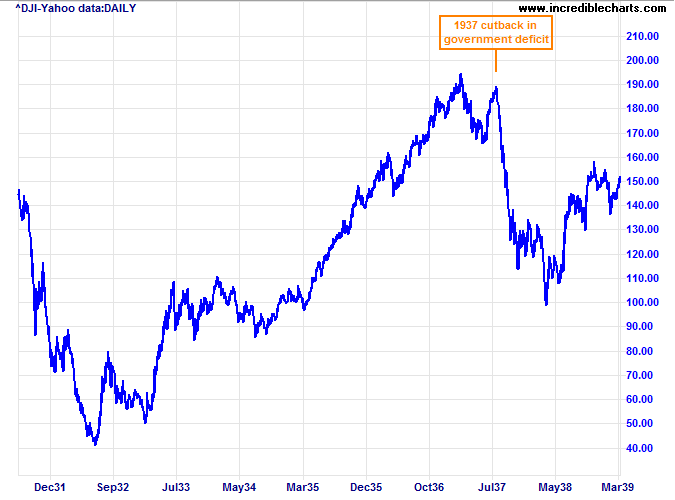
Richard Koo is one of the world's leading authorities on this subject. He advised the Japanese government during their balance sheet recession in the 1990s and his warning should not be taken lightly. For a video of the interview, go to http://ineteconomics.org/richard-koo.
Fiscal stimulus should only be cut when the private sector has recovered and private debt levels are growing at around 5 percent a year. Commercial bank loans and leases are still shrinking and the private sector is some way from a full recovery.
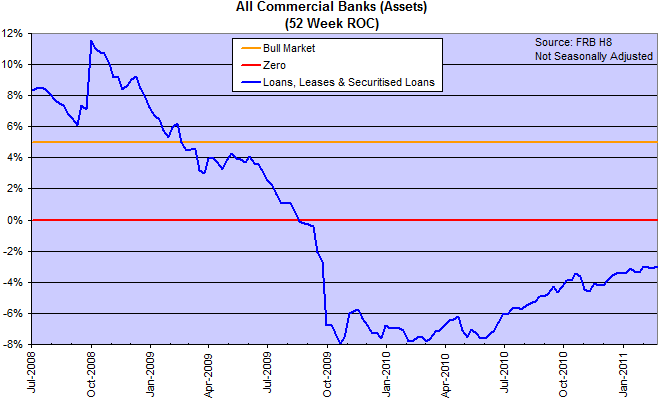
This does not mean that governments should continue their profligate ways, but is an endorsement of carefully planned infrastructure spending during a balance sheet recession. It is vitally important that the money be spent wisely, providing future cost savings or revenue streams into the future; so the taxpayer has real assets to show for the debt incurred. Otherwise taxpayers are presented with a collection of white elephants while encumbered by a crippling debt load.
Gold
Gold is consolidating above its new support level at $1420; follow-through above $1440 would signal an advance to $1520*. Reversal below $1400 is unlikely but would indicate weakness. A Twiggs Momentum (21-day) trough above zero would strengthen the bull signal.
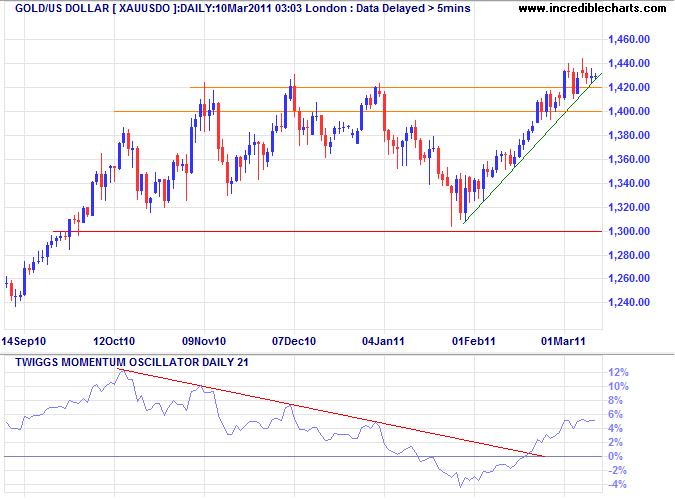
* Target calculation: 1420 + ( 1420 - 1320 ) = 1520
A Twiggs Money Flow (21-day) trough above zero, on GLD, would likewise signal a primary advance.
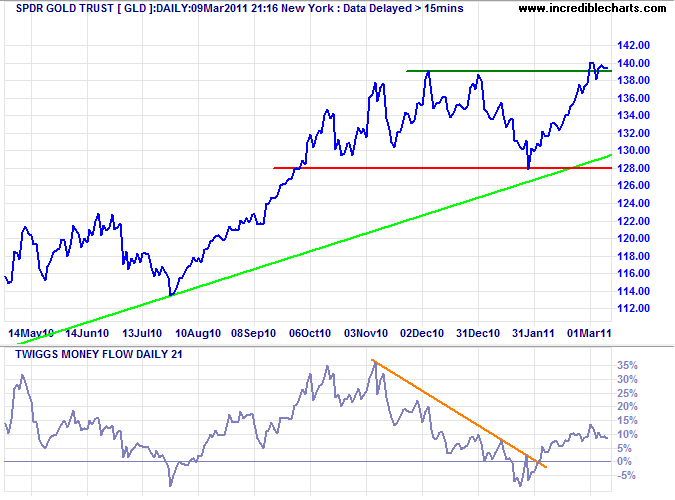
US Dollar Index
The Dollar Index is testing primary support at 76. Breach of primary support would offer a target of 71*. Recovery above 79, however, would complete a double bottom and suggest a rally to 81. Likewise, Twiggs Momentum recovery above zero would complete a bullish divergence, suggesting the start of a new up-trend.
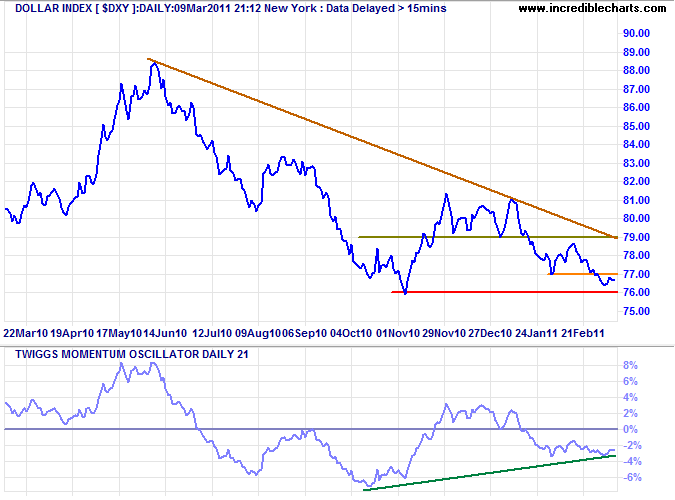
* Target calculation: 76 - ( 81 - 76 ) = 71
Silver
Silver continues its strong rally: a bullish sign for gold.
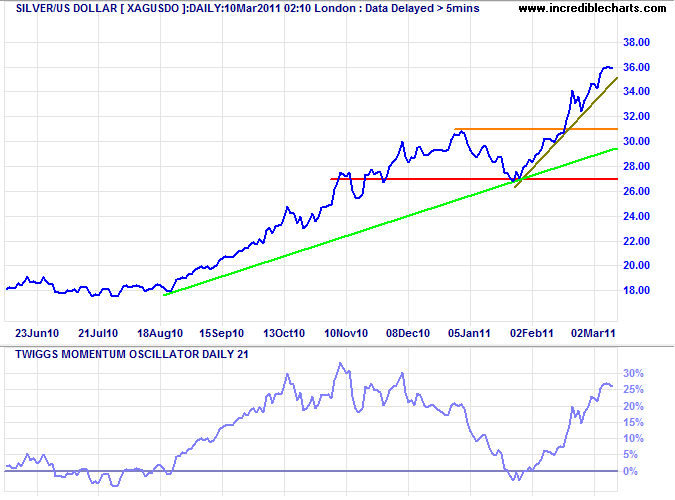
* Target calculation: 31 + ( 31 - 27 ) = 35
Crude Oil
Nymex WTI crude broke through the psychological barrier of $100/barrel and, with the ongoing turmoil in Libya, is likely to overshoot its target of $105*.
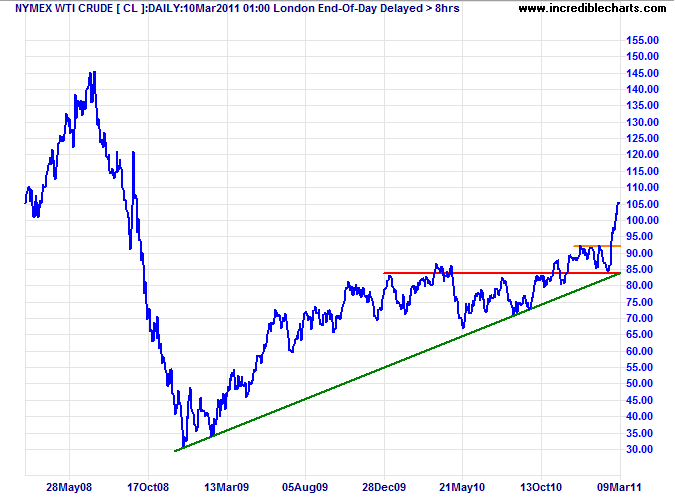
* Target calculation: 85 + ( 85 - 65 ) = 105
Commodities
The CRB Commodities Index continues its strong upward trend channel. The Australian dollar is likely to follow.
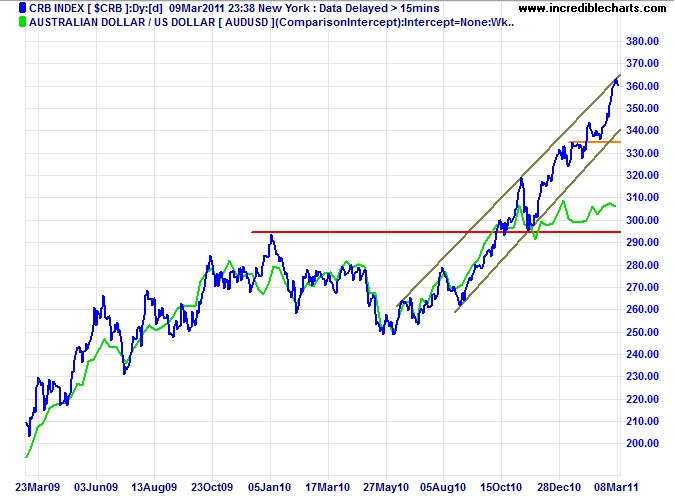
Euro
The euro broke through resistance at $1.3850, signaling a primary up-trend. Retracement that respects the new support level would confirm, offering a medium-term target of $1.42. Reversal below $1.37 is unlikely but would warn of another test of primary support at $1.3450. A Twiggs Momentum trough above zero would strengthen the bull signal.
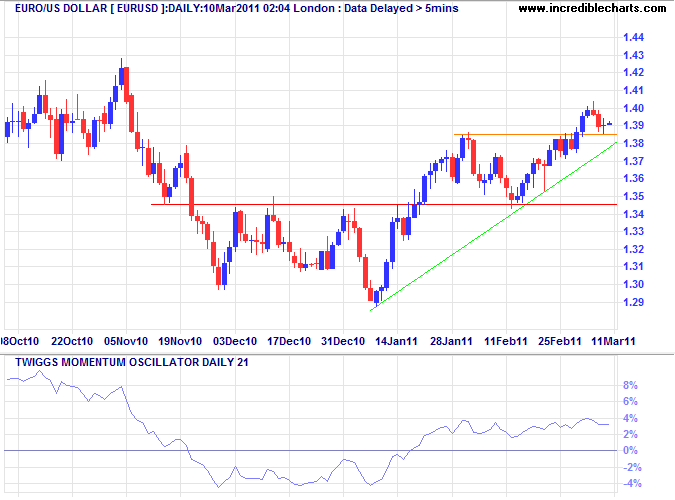
* Target calculation: 1.3850 + ( 1.3850 - 1.3500 ) = 1.4200
UK Pound Sterling
The pound retreated from resistance at $1.63. Respect of medium-term support at $1.60 is likely, however, and breakout above $1.63 would signal an advance to the 2009 high of $1.70*. A Twiggs Momentum trough above the zero line would strengthen the signal.
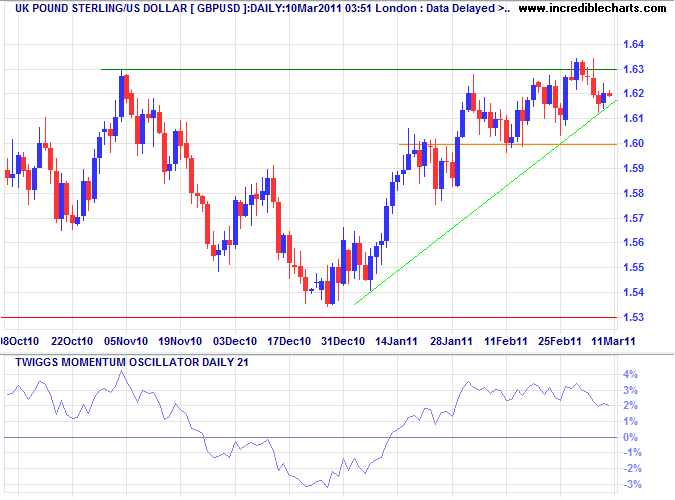
* Target calculation: 1.62 + ( 1.62 - 1.53 ) = 1.71
Japanese Yen
The yen is ranging between ¥81 and ¥84 against the dollar. Twiggs Momentum oscillating around the zero line signals uncertainty. Breach of support at ¥80 would warn of a decline to ¥76*, while breakout above ¥84 would indicate an advance to ¥88*.
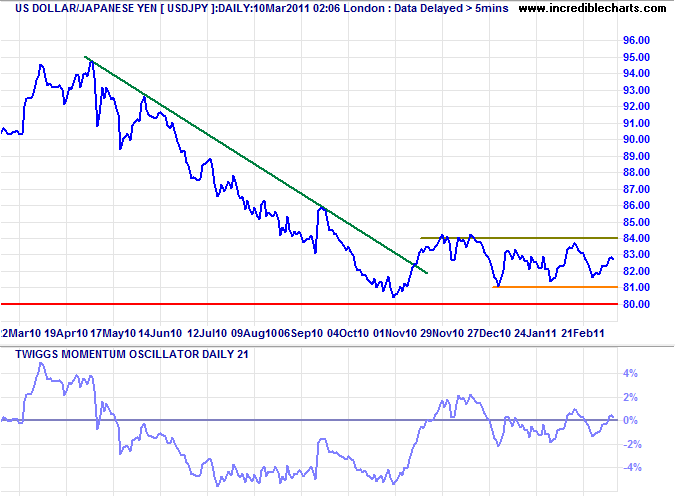
* Target calculation: 84 + ( 84 - 80 ) = 88; 80 - ( 84 - 80 ) = 76;
Australian Dollar
The Aussie dollar is headed for another test of medium-term support at $1.00 against the greenback. Rising commodity prices suggest that the primary up-trend will continue. Breakout above $1.02 would offer a target of $1.08*.
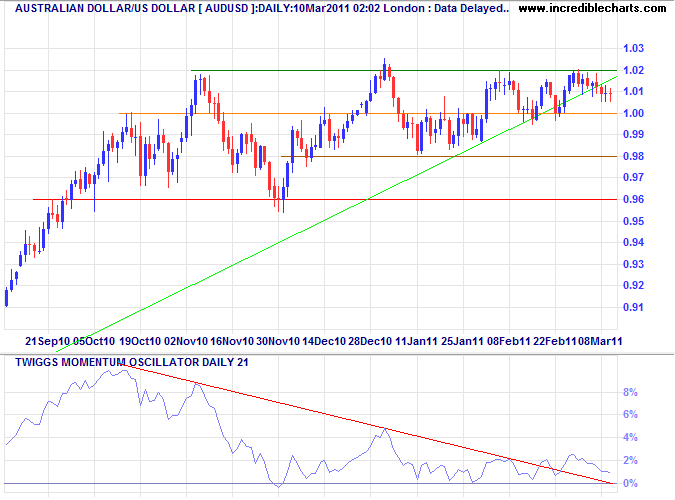
* Target calculation: 1.02 + ( 1.02 - 0.96 ) = 1.08
I look upon an increase in the power of the State with the greatest fear because, although while apparently doing good by minimizing exploitation, it does the greatest harm to mankind by destroying individuality which lies at the heart of all progress.
~ Gandhi

Author: Colin Twiggs is a former investment banker with almost 40 years of experience in financial markets. He co-founded Incredible Charts and writes the popular Trading Diary and Patient Investor newsletters.
Using a top-down approach, Colin identifies key macro trends in the global economy before evaluating selected opportunities using a combination of fundamental and technical analysis.
Focusing on interest rates and financial market liquidity as primary drivers of the economic cycle, he warned of the 2008/2009 and 2020 bear markets well ahead of actual events.
He founded PVT Capital (AFSL No. 546090) in May 2023, which offers investment strategy and advice to wholesale clients.
